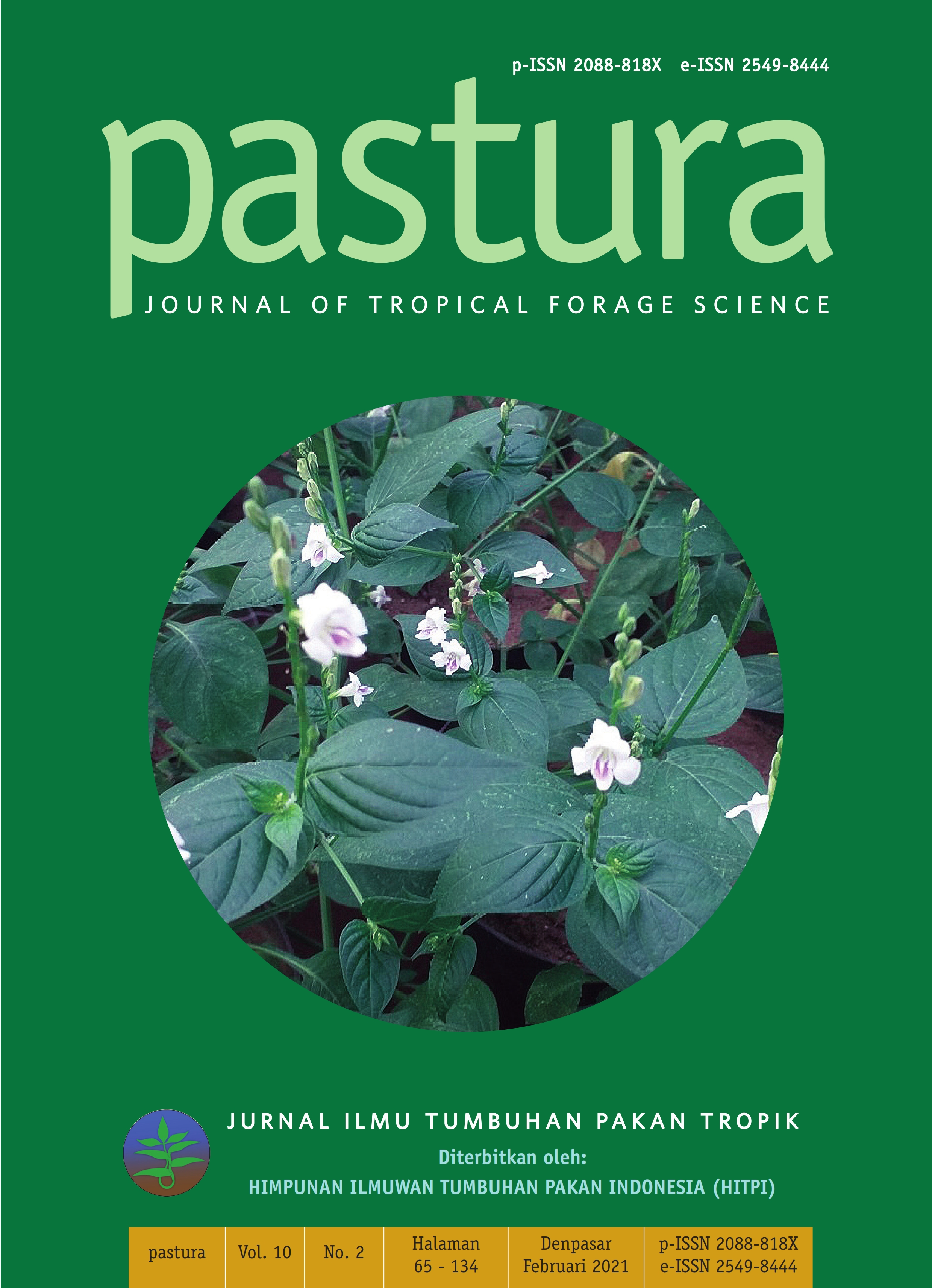MAPPING THE POTENTIAL OF FOOD CROP BY-PRODUCTS AS FEED TO SUPPORT THE INCREASING OF BEEF CATTLE POPULATION IN MALANG DISTRICT
Abstrak
Malang Regency as one of regions in East Java has a large potential for the development of beef cattle
population. One of the problems faced by breeders in Malang Regency was the fluctuation of forage. Using
food crop by-products as feed becomes an alternative to meet the nutritional needs of livestock. This study
mapped the potential of rice straw, corn straw, soybean straw, peanut straw, cassava straw and sweet
potato straw as a source of feed to support the increasing of beef cattle population. The potential was
determined based on the capacity of area per district due to the production of dry matter, crude protein
and total digestible nutrients. The results showed that Donomulyo, Singosari and Kepanjen sub-districts
had the greatest potential in increasing the population of beef cattle in average by 35.814 heads per year.
Key words: beef cattle, Malang Regency, population, straw
##plugins.generic.usageStats.downloads##
Authors who publish with this journal agree to the following terms:
- All articles published by Pastura Journal Of Tropical Forage Science are made available under an open access license worldwide immediately. This means everyone has free and unlimited access to the full-text of all articles published in Pastura Journal Of Tropical Forage Science, and everyone is free to re-use the published material given proper accreditation/citation of the original publication. Open access publication is supported by authors' institutes or research funding agency by payment of a comparatively article processing charge for accepted articles (See Author Fees). Pastura Journal Of Tropical Forage Science publish articles under the Creative Commons Attribution License.
- Authors are able to enter into separate, additional contractual arrangements for the non-exclusive distribution of the journal's published version of the work (e.g., post it to an institutional repository or publish it in a book), with an acknowledgement of its initial publication in this journal.
- Authors are permitted and encouraged to post their work online (e.g., in institutional repositories or on their website) prior to and during the submission process, as it can lead to productive exchanges, as well as earlier and greater citation of published work (SeeThe Effect of Open Access).





